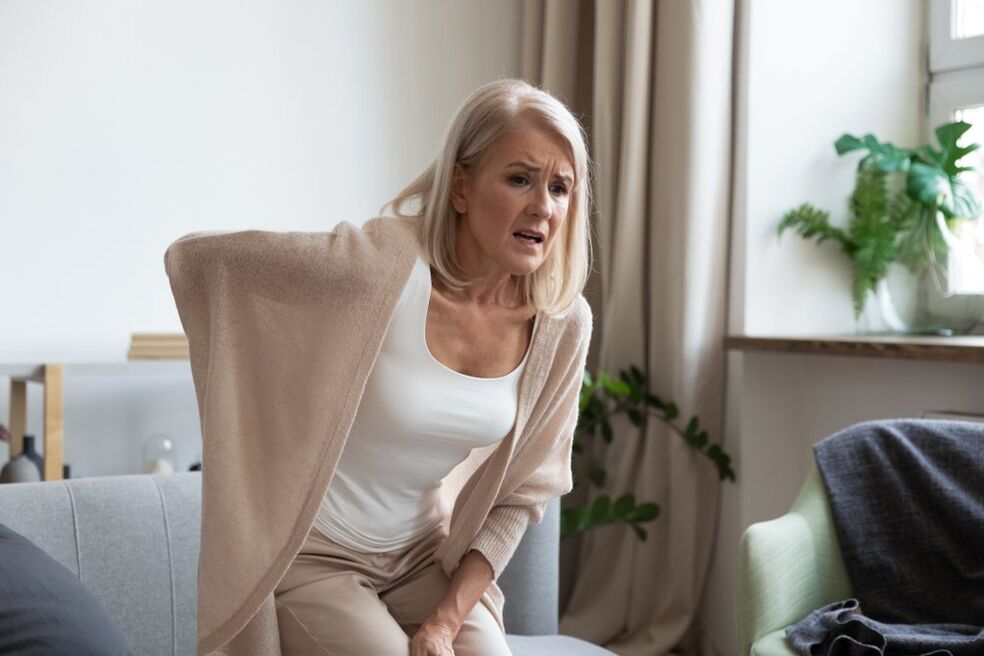Osteochondrosis is a chronic disease characterized by progressive degenerative changes in the intervertebral discs. Often such a pathological process affects the cervical or lumbar spine. Gradually, this leads to the formation of an intervertebral hernia, followed by compression of the spinal cord, passing vessels, and so on. In this article we will talk about the clinical signs and treatment of osteochondrosis of the intervertebral discs in the spine.
How does lumbar osteochondrosis manifest itself?

The main clinical sign of this pathological process is back pain.
The intensity and nature of the pain syndrome may be different in each case. Some patients show sharp pains that are aggravated by the slightest movement and force them to take a forced position.
However, most (more than 70% of patients) have dull pain syndrome. The pain is moderate in intensity and is always present. Although the patient does not take a forced position, it limits physical activity. When the lumbar spine is affected, this is manifested by avoiding sharp bends, slow sitting and standing.
In addition to the symptoms of the spine itself, extravertebral symptoms may also be observed. If compression of the spinal roots occurs, the person shows pain along the peripheral nerves. A common manifestation of pathological changes in the lumbar region is lumboischialgia, which manifests itself as an attack of acute pain localized in the lumbar region and the thigh, which occurs during physical exertion.
Principles of treatment

Osteochondrosis is a disease that requires complex treatment. First of all, it is recommended to limit motor activity in the affected area during an exacerbation. Here we mean bed rest.
Non-steroidal anti-inflammatory drugs and analgesics are prescribed to relieve pain. You can relieve muscle spasms with the help of muscle relaxants. In some cases, the treatment plan is supplemented with anticonvulsants. Topical administration of glucocorticosteroids is possible with compression of the spinal cord.
In addition to drug therapy, physiotherapy, therapeutic exercises and massage are prescribed to patients with such a diagnosis.
Balneotherapy is recommended during the rehabilitation phase. In 2017, scientists at the federal university published an article showing the effectiveness of rehabilitation treatment of patients with spinal osteochondrosis using combined balneotherapy, which includes dry air thermal and aerosol horn baths.
With severe compression of the spinal cord, surgery is decided.


















